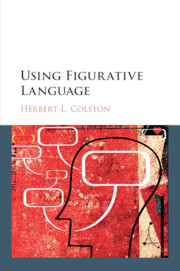Book contents
- Using Figurative Language
- Using Figurative Language
- Copyright page
- Dedication
- Dedication
- Contents
- Book part
- Preface
- 1 WhyDon’t People Say What They Mean?
- 2 What Is aPragmatic Effect?
- 3 What Are thePragmatic Effects?
- 4 HowIs Figurative Language Used?
- 5 WhatIs Figurative LanguageUse?
- 6 Conclusion
- Notes
- References
- Index
- References
References
Published online by Cambridge University Press: 05 December 2015
- Using Figurative Language
- Using Figurative Language
- Copyright page
- Dedication
- Dedication
- Contents
- Book part
- Preface
- 1 WhyDon’t People Say What They Mean?
- 2 What Is aPragmatic Effect?
- 3 What Are thePragmatic Effects?
- 4 HowIs Figurative Language Used?
- 5 WhatIs Figurative LanguageUse?
- 6 Conclusion
- Notes
- References
- Index
- References
- Type
- Chapter
- Information
- Using Figurative Language , pp. 239 - 262Publisher: Cambridge University PressPrint publication year: 2015



